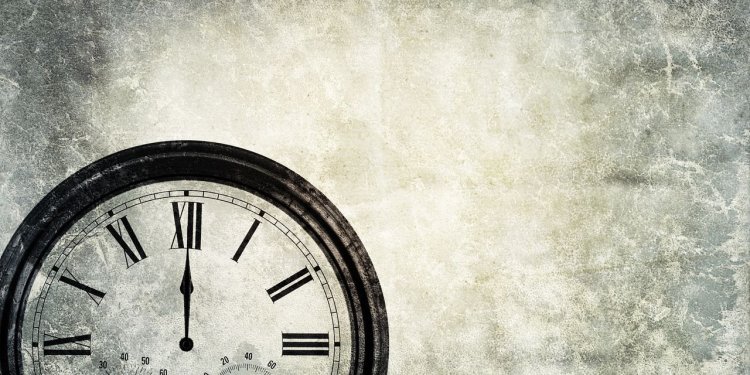‘The Fourth Turning Is Here’ and ‘End Times’ Review: Big Wheel
Does a cyclic view of American history predict a coming political crisis—and how to navigate it? Photo: Getty Images By Dominic Green July 21, 2023 11:59 am ET If historians could tell the future, they would be better paid. They have enough trouble telling the past. History keeps being rewritten because it is impossible not to write from the present. Predictions are for economists, but the disappointing results of their discipline explain why Thomas Carlyle called it the “dismal science.” But then, he was a historian. Neil Howe and Peter Turchin take different but instructive approaches to writing predictive “big history” for the present and near future. Each has previously written books that foretold the future to impressive degrees. Both detect deep cyclical patterns in the quotidian fluctuations of our experience. Both b


Photo: Getty Images
If historians could tell the future, they would be better paid. They have enough trouble telling the past. History keeps being rewritten because it is impossible not to write from the present. Predictions are for economists, but the disappointing results of their discipline explain why Thomas Carlyle called it the “dismal science.” But then, he was a historian.
Neil Howe and Peter Turchin take different but instructive approaches to writing predictive “big history” for the present and near future. Each has previously written books that foretold the future to impressive degrees. Both detect deep cyclical patterns in the quotidian fluctuations of our experience. Both believe the United States is now entering a crisis whose resolution will transform America’s society and its place in the world in the 2030s.
In 1997 Mr. Howe and William Strauss published “The Fourth Turning,” which described a four-generation cycle of renewal, stabilization, decline and crisis in Anglo-American history. Each generational “turning” takes about 20 years, so a complete cycle takes roughly 80 years. The current cycle began in 1946. Mr. Howe and Strauss predicted that its fourth turning, the “Crisis” phase of civil conflict, would reach a climax around 2020 before resolving successfully via economic restructuring around 2026. This is not quite what happened, but it is close enough to suggest the value of cyclical theories of history.
“The old American republic is collapsing,” Mr. Howe writes in “The Fourth Turning Is Here.” Mr. Howe’s Fourth Turning, like his cycle, contains sub-stages. The “precursor” of the current crisis was the post-9/11 War on Terror. The “catalyst” was the financial crisis of 2008 and the ensuing Great Recession. The first “regeneracy” was the 2016 election, which sorted the country “into two partisan and irreconcilable camps.” We now face “ekpyrosis,” a term drawn from the Stoic philosophers’ idea that the universe periodically destroys and rebuilds itself.
As often happens with construction projects, completion has been deferred. People live longer than they did during previous cycles, so an 80-year cycle (a “saeculum,” as Mr. Howe calls it) can extend to 92 years. The Crisis began later than expected and will end later, too, “sometime in the mid-2030s.” We shall soon be leaving the “destructive phase” and entering the “constructive phase.” This is not as cheering as it may sound, for the constructive phase is also highly destructive.
14 Books We Read This Week
The challenging science of human consciousness, watching history’s cycles, the Allman Brothers’ Southern rock recipe and more.
The risks of “all-out struggle against a perceived external aggressor” and “internal political revolution or civil war” peak along with a crisis. These can cause complete domestic breakdown, as they have in the past (England’s War of the Roses, the American Civil War). Alternatively, one faction can achieve domestic dominance and lead “a united nation into a climax-defining conflict against an external enemy” (Elizabethan England against the Spanish Armada, President Roosevelt against the Axis powers). A second regeneracy, “probably” by elections, “possibly” by changes of party leadership, could forestall bloodshed. But an “indefinite stalemate” would “break the historical pattern.”
Mr. Howe’s theory runs on generational psychology and Jungian archetypes. The “sensitive young adults” of an Artist generation come of age in the First Turning, an “upbeat era of strengthening institutions.” In our saeculum, this is the “American High” of the Truman, Eisenhower and Kennedy presidencies, and the Silent Generation (born 1925-42). The Second Turning is an “Awakening,” a “passionate era of spiritual upheaval” when the “defiant young crusaders” of a Prophet generation challenge the civic order with new values. This would be the Consciousness Revolution that began in the mid-1960s, with the Boomers (born 1943-60) as its Prophets.
As the old regime weakens and new values take root, the Third Turning is the age of individualism, weakening institutions and social “Unraveling.” A Nomad generation (Gen X, born 1961-81) of “alienated young adults” grows up amid culture wars and the breakdown of political centrism. The Fourth Turning makes them the “pragmatic midlife leaders” who will manage the crisis. They clear the path for the “Hero” generation and a new High. The last Heroes were the G.I. generation (born 1901-24); the current Heroes are the Millennials (born 1982-2005). The Artists who run the next America will be Gen Z, or Homelanders, as Mr. Howe calls them.
Mr. Howe predicts a Twilight of the Boomers. On April 13, 2029, the large asteroid Apophis, named after “the Egyptian demon serpent of darkness,” will pass “so perilously close to earth as to be easily visible to the naked eye.” Boomers, prone to “scorched-earth politics” and the “language of ultimatums and catastrophe” will embrace a “new ethic of decline and death” and also tax everything in sight.
The “most martial elder generation since World War II,” they will exhort younger Americans to make sacrifices, but “the sacrifice they ask for vastly outweighs the future reward.” The young will reject this as “incompetence, even delusion.” Only the Nomads of Gen X can moderate the death-wish zeal of the “Boomer priest-warriors” and prevent “some righteous old Aquarian” from “turning the world’s lights out.”
Mr. Howe identifies the process and its moods, but not its causes or mechanism. The “Anglo-American” ideal will triumph because the spirit of history demands it. Past Anglo-American crises have had “largely successful resolutions,” so Americans may expect a “world full of marvels” in which their cities revive, the economy booms, the birth rate rises and America leads a “global pronatalist makeover of social democracy.” But what if Americans no longer see themselves as belonging to an “Anglo” saeculum? What if America is “damaged and diminished” by great-power conflict or a “self-destructive civil war,” or becomes “drastically degraded in its political constitution”? The crystal ball is blank, the prospect grim.
Peter Turchin is not much interested in idealism, Anglo-American exceptionalism or archetypes. A biologist by training and a data-cruncher by disposition, he grew up in the Soviet Union. In “End Times: Elites, Counter-Elites, and the Path of Political Disintegration,” Mr. Turchin offers a lucid and elegant theory that is stable across time and place in the manner of natural laws and scientific findings. If Mr. Howe’s visions are encrusted with the rococo indulgences of astrology, Mr. Turchin’s have the sharp-lined elegance of social science. Data flow, not generational character, is destiny. He calls it “cliodynamics,” after Clio, the Greek muse of history. It could happen here, because it always happens everywhere.
To Mr. Turchin, empires and great powers are “metronomes swinging between integrative and disintegrative phases.” He sees only “two great cycles” of political polarization in American history. The first ran from 1830 to 1930; it peaked with the Civil War and the labor disturbances around 1920, and was resolved by the “Great Compression” that reduced the wealth gap between 1930 and 1970. The second polarization began in 1970, when the wealth gap began to widen again, and will peak soon. The wealth gap widens because the wealthy and well-connected turn on the “wealth pump” for their own benefit. Sociologists call it the “iron law of oligarchy.” This leads to declining public trust, exploding public debt, decline in the value of real wages, and intense competition for patronage.
That competition arms the mechanism of revolution: “elite over-production,” the “overproduction of young graduates with advanced degrees.” The French and Russian revolutions show that the “truly dangerous revolutionaries” are “frustrated elite aspirants,” especially lawyers. America’s “growing proportion of credentialed youth” are “doomed to become the educated precariat.” They have “nothing to lose but their precarity,” and they will not “check their privilege” quietly. Consider #MeToo, Black Lives Matter, cancel culture, and the Salem-style witch-hunting of J.K. Rowling on social media for alleged “transphobia.” Perhaps this is why Shakespeare wrote “The first thing we do, let’s kill all the lawyers.”
Mr. Turchin proposes a three-stage political evolution. In the precrisis, the faltering state faces multiple challenges from different elite factions. In the crisis phase, a loss of legitimacy leads to state collapse and intra-elite conflict over the spoils. Finally, “a new monopoly of authority” arises. The winners focus on “gaining routine acceptance of the reconstructed political, religious and social institutions.” We are “clearly in transition” from the precrisis to the crisis.
After the Trump presidency, America is at “the brink of state breakdown” from “elite overproduction and popular immiseration.” The state is “struggling to maintain control of the ideological landscape in the face of a multitude of counter-elite challengers,” from the Woke Left to the New Right. The “structural conditions” in the U.S. today resemble, he claims, not so much the U.S. of the 1970s, as “other pre-revolutionary societies, such as late-nineteenth-century Russia.” As the Russian revolutionaries used to say, what is to be done?
Nineteenth-century Britain reduced the pressures of elite overproduction and mass immiseration through emigration, industrial ingenuity and, most importantly, institutional reforms that transferred political power from the landed gentry to the “upwardly mobile commercial elites.” The United States “shut down the wealth pump” in the Progressive Era but in the 1970s allowed “self-interested elites” to turn it back on. Resolving the crisis, Mr. Turchin warns, will require “a certain competency of the ruling class.”
The future is always unwritten, but that does not mean it should not be written about. There is always profit in reading prophets. Mr. Howe’s generation-based scheme may seem odd, but in retrospect, we do often agree that each generation has its own character. So why not in prospect? “The Fourth Turning Is Here” is big history and bold futurology, and the closer it is to the present, the more reasonable it seems. Mr. Turchin is as much a past and presentist as a futurist, and his rational method allows “End Times” to plausibly identify a hinge on which American history is now turning.
These books, so different in approach and scope, complement each other. You have about a decade before the crisis blows up, so there’s plenty of time to read both.
—Mr. Green is a Journal contributor and a fellow of the Royal Historical Society.
What's Your Reaction?

















